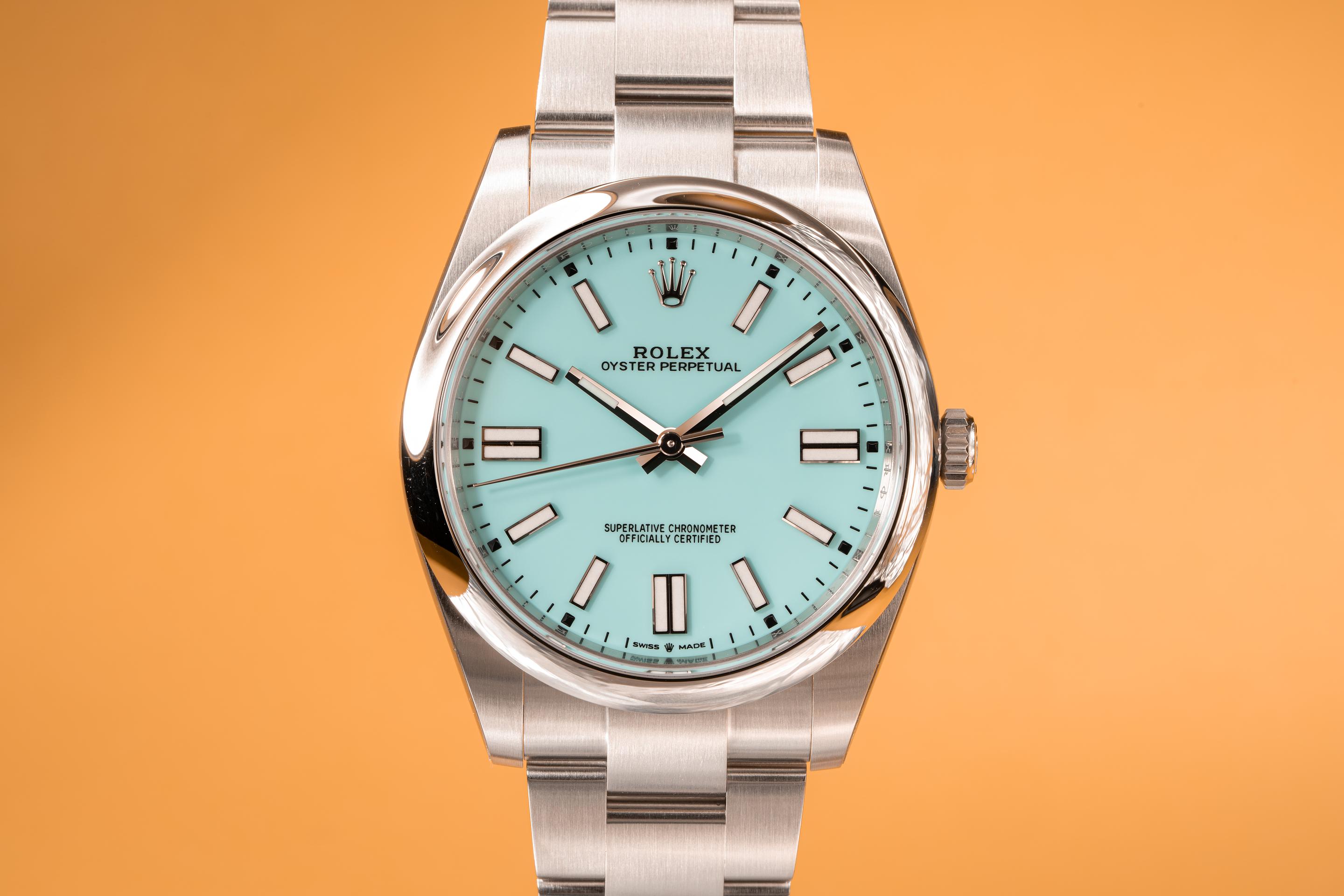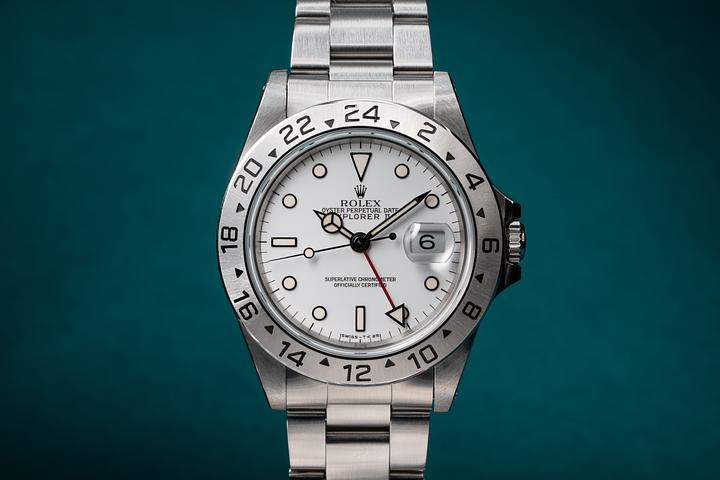Rolex Tiffany Blue Dial: Rarity, Design, and Collector Appeal

Rolex Tiffany Blue: The Color, The Craze, and The Craft Behind the Swiss Legend
In the rarefied world of horology, few phenomena match the magnetic pull of the Rolex Tiffany Blue dial. Seamlessly blending the pristine precision of Swiss watchmaking with a hue that commands visual and cultural attention, “Tiffany Blue” has transcended color to become a symbol. When Rolex introduced timepieces featuring this striking tone, the result was an explosion of collector interest, secondary market spikes, and significant discourse throughout the luxury landscape. What follows is a dive into how Rolex and Tiffany Blue became an unexpected pairing, the uniqueness of the color, the manufacturing context behind it, and its impact on modern collecting. For enthusiasts, investors, and aficionados alike, understanding the Rolex Tiffany Blue story is crucial to appreciating both the product and the power of perception in the Swiss watch industry.
What Is Tiffany Blue and Why Does It Matter?
Tiffany Blue, a soft robin’s egg blue, is famously trademarked by the American jeweler Tiffany & Co. Originally introduced with the company’s Blue Book in 1845, the shade has long been a symbol of elegance, refinement, and timeless taste. Its Pantone designation, PMS 1837, references the year Tiffany & Co. was founded. While not originally associated with any particular watch brand, the particular harmony of Tiffany Blue with certain objects—jewelry boxes, marketing materials, and gravity-defying diamonds—set the tone for its future crossover appeal in luxury circles.
Fast forward to recent years, this eye-catching color began appearing on Rolex dials—although it’s important to note that Rolex never officially labels the hue as “Tiffany Blue.” Collectors and media adopted the term to describe a specific version of the Oyster Perpetual model, primarily released in 2020, featuring a lacquered turquoise dial that closely mirrors Tiffany Blue’s signature tone. While Rolex remains deliberate and cautious in confirming direct associations with external brands, especially a competitor in the luxury retail space, the resemblance was too remarkable to go unnoticed. It quickly fueled the market’s imagination and, in turn, demand.
The 2020 Oyster Perpetual and the Rise of the Tiffany Dial
In 2020, Rolex made a notable move by refreshing its Oyster Perpetual line with a new range of dial colors. Among them, the turquoise blue dial captured immediate attention. Offered originally in several sizes—28mm, 31mm, 36mm, and 41mm—the new dials contrasted Rolex’s traditional restrained color palettes. Amid options such as coral red, green, yellow, and candy pink, the turquoise dial stood out for its distinctive sophistication and uncanny similarity to Tiffany Blue.
This dial color captivated collectors, especially when rendered within the clean, symmetrical framework of the Oyster Perpetual. With no date window, minimal text, and understated indices, the design provides a purist platform for the dial color to take center stage. For Rolex, a brand famous for evolution over revolution, this splash of chromatic vibrancy was a calculated risk that paid immeasurable dividends. Secondary markets reacted instantly, and within months, the Tiffany Blue Oyster Perpetual became one of the most in-demand modern Rolex models available.
Understanding the Hype: Scarcity, Style, and Symbolism
While Rolex did not limit the initial production of the turquoise dial models, their discontinuation in early 2022 for some case sizes inadvertently transformed them into grails. The 41mm and 39mm versions, in particular, saw valuations surge several multiples above retail pricing. As production ceased, the appeal wasn't just in the design or functionality—but in symbolic scarcity. Many collectors also saw a confluence between aesthetic simplicity and brand storytelling: Rolex’s approach to innovation cloaked in quiet confidence, paired with the visual nod to Tiffany’s world of elegance.
Luxury, at its core, often hinges not just on craftsmanship but on emotion and cultural resonance. Rolex Tiffany Blue touched both. It integrated the emotional cultural cues of Tiffany Blue with the mechanical legitimacy of Rolex, producing an alchemy that caught fire. Even celebrities and high-profile collectors began donning the models, further accelerating visibility and desirability.
Are Rolex and Tiffany & Co. Officially Collaborating?
While the world of luxury is no stranger to collaborations, there is no official partnership between Rolex and Tiffany & Co. on the turquoise dial Oyster Perpetuals. Unlike other timepieces that explicitly feature dual logos on the dial—a tradition seen with Patek Philippe and Tiffany & Co.—Rolex has never co-branded dials with Tiffany and has not issued any public confirmations regarding the naming of this color.
Historically, Rolex did produce double-signed dials for select retailers, including Tiffany & Co., in the mid-20th century. Those collaborations often applied to specific models like the Day-Date or Datejust and were exceptional rather than the norm. Today, Rolex maintains tight control over its distribution, branding, and after-sales service network. Thus, any reference to Tiffany Blue in the context of modern Rolex watches remains informal, adopted by the collecting community rather than Rolex itself. Nevertheless, the nomenclature persists—and the association remains powerful because of the visual impact and rarity of the dial.
The Technical Craft Behind the Dial
Creating a colored dial at Rolex involves more than just pigment selection. The turquoise dials for the Oyster Perpetual are crafted using a sophisticated lacquer application process. This ensures not only color consistency but also longevity, resistance to fading, and perfect symmetry under magnification. The dial is applied over a metal base with successive layering, followed by curing and polishing cycles that preserve depth and hue. Precision is essential—not merely for aesthetic reasons but also to meet Rolex’s stringent standards for quality control and resistance to environmental shifts.
The color-matching consistency is one of Rolex’s defining traits. While many manufacturers may struggle to produce exact tones between product cycles, Rolex dials reveal almost no variance across watches. This smooth, uninterrupted blue—ideally tempered between saturation and subtlety—is part of what makes the watch so visually arresting. Despite its simplicity, the dial reflects extreme complexity in production, echoing the core values of Swiss horological excellence.
Rolex Tiffany Blue and the Future of Collector Culture
The phenomenon of the Rolex Tiffany Blue dial underscores how important design, perception, and storytelling are becoming in modern horology. In a market increasingly leaning toward lifestyle-driven collecting, rather than purely technical spectrums, the intersection of symbolism and engineering commands premium attention. While Rolex never intended to create an homage to Tiffany & Co., public perception bestowed the title as a form of reverence, cementing the model as a future collectible.
The minimalist Rolex aesthetic—combined with a color synonymous with sophistication—has unwittingly set a new standard. As demand for unique dial variations continues to rise, it remains to be seen how Rolex will evolve its color strategies. Will the brand reintroduce the turquoise dial? Will other hues emerge from heritage influences? What’s assured is that Rolex has demonstrated yet again that restraint, when applied with mastery, can be the most powerful form of innovation. For now, the Rolex Tiffany Blue Oyster Perpetual stands as a contemporary classic—quietly disruptive, instantly recognizable, and unforgettably refined.




